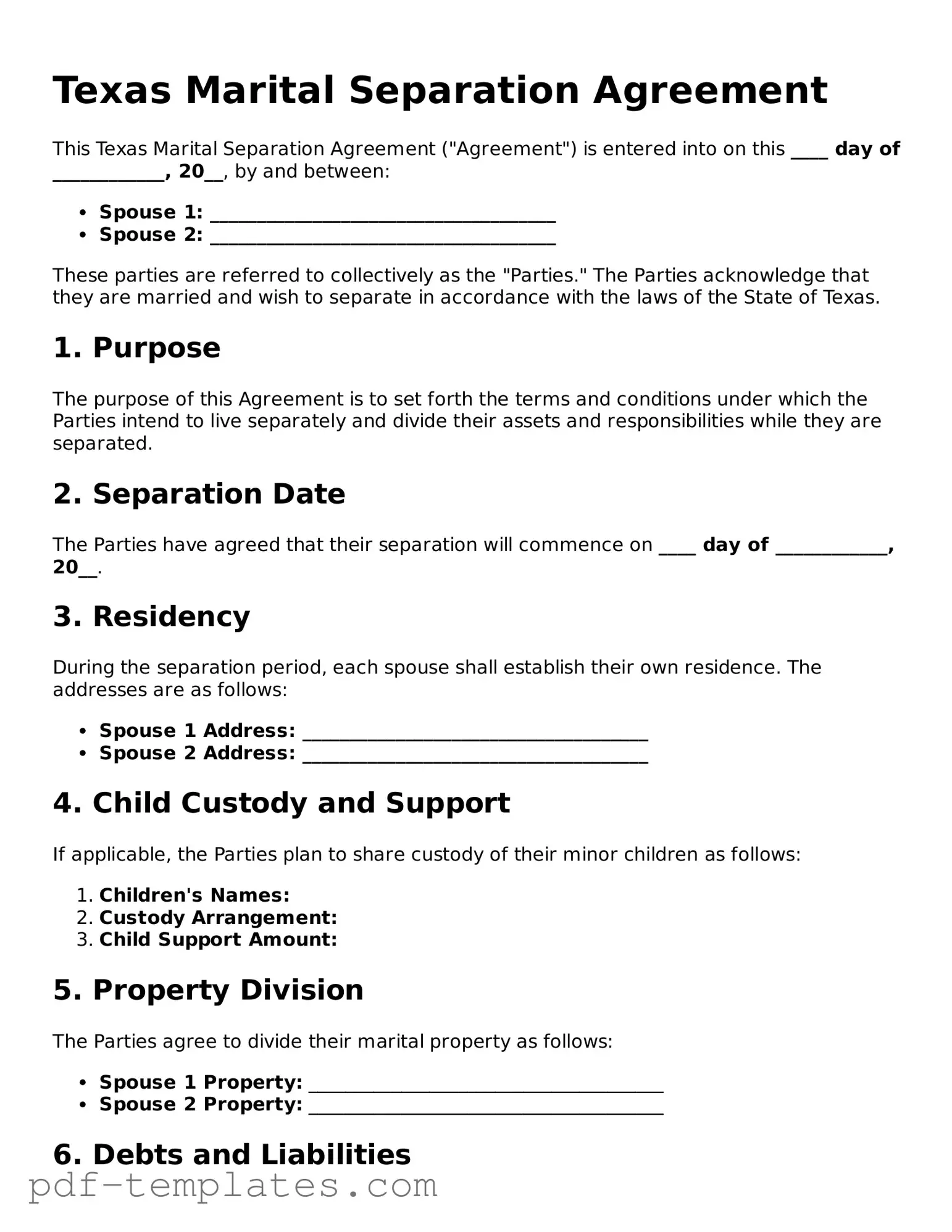A Texas Marital Separation Agreement is similar to a Divorce Settlement Agreement. Both documents outline the terms of separation between spouses, including the division of property, debts, and responsibilities for child support and custody. While a Marital Separation Agreement is typically used when couples wish to live apart without immediately filing for divorce, a Divorce Settlement Agreement formalizes the end of the marriage. The key difference lies in the finality; the former is a temporary arrangement, while the latter concludes the marriage legally.
Another document that resembles the Texas Marital Separation Agreement is a Cohabitation Agreement. This is often used by couples who live together but are not married. Like a Marital Separation Agreement, it sets forth the rights and responsibilities of each partner regarding property, finances, and other shared obligations. Both documents aim to clarify expectations and reduce conflicts, but a Cohabitation Agreement is designed for couples who choose to live together without the legal ties of marriage.
A Prenuptial Agreement also shares similarities with a Marital Separation Agreement. Both documents deal with the division of assets and responsibilities, though they are created at different stages of a relationship. A Prenuptial Agreement is established before marriage, laying out how assets will be divided in the event of divorce or separation. Conversely, a Marital Separation Agreement is used during or after the marriage, focusing on the separation phase. Both agreements serve to protect individual interests and provide clarity in complicated situations.
As couples navigate the complexities of separation, it is essential to understand the various legal agreements available, including the Texas Marital Separation Agreement and its counterparts, such as the Non-marital Separation Agreement and the Child Custody Agreement. These documents serve to define responsibilities and rights, thereby minimizing misunderstandings. For those in California, utilizing forms like the All California Forms can further aid in clarifying legal obligations during transitions.
Lastly, a Child Custody Agreement is akin to a Marital Separation Agreement in that it addresses the welfare of children involved in a separation. This document specifies custody arrangements, visitation rights, and child support obligations. While a Marital Separation Agreement may include these elements as part of the overall separation terms, a Child Custody Agreement focuses specifically on the children's needs. Both documents aim to create a stable environment for children during times of family transition.
